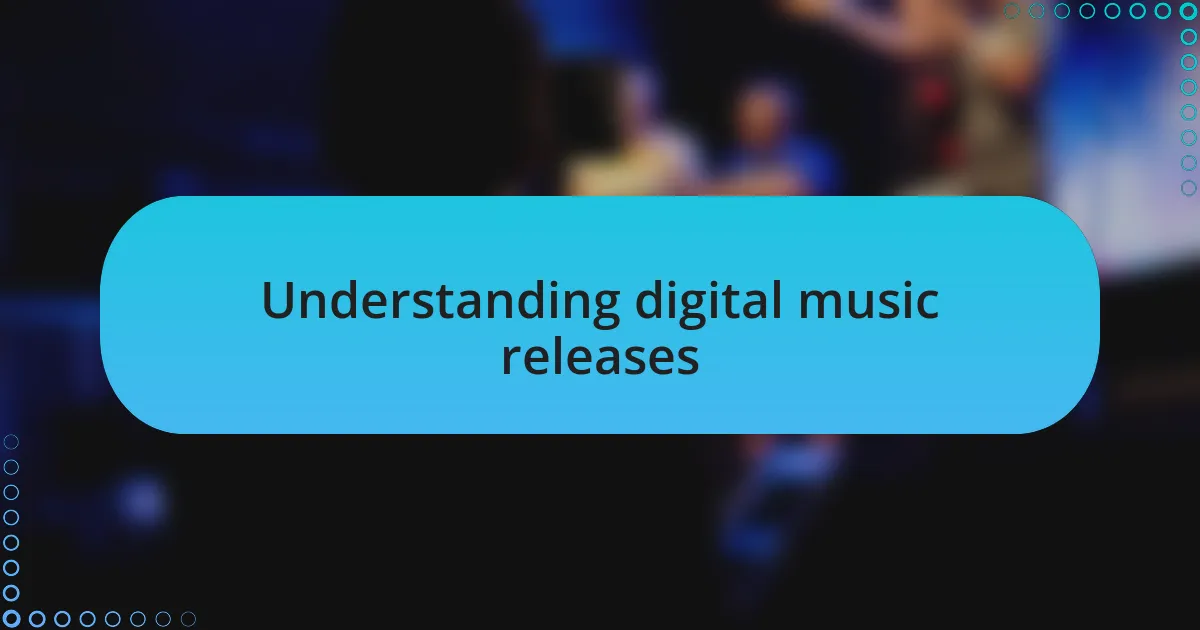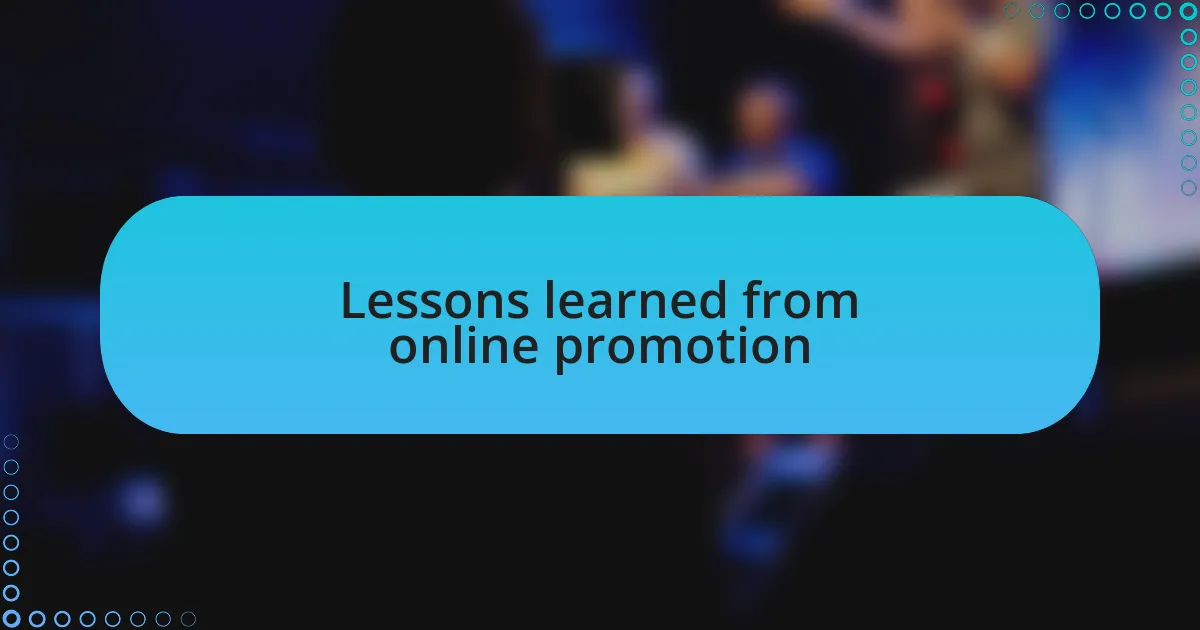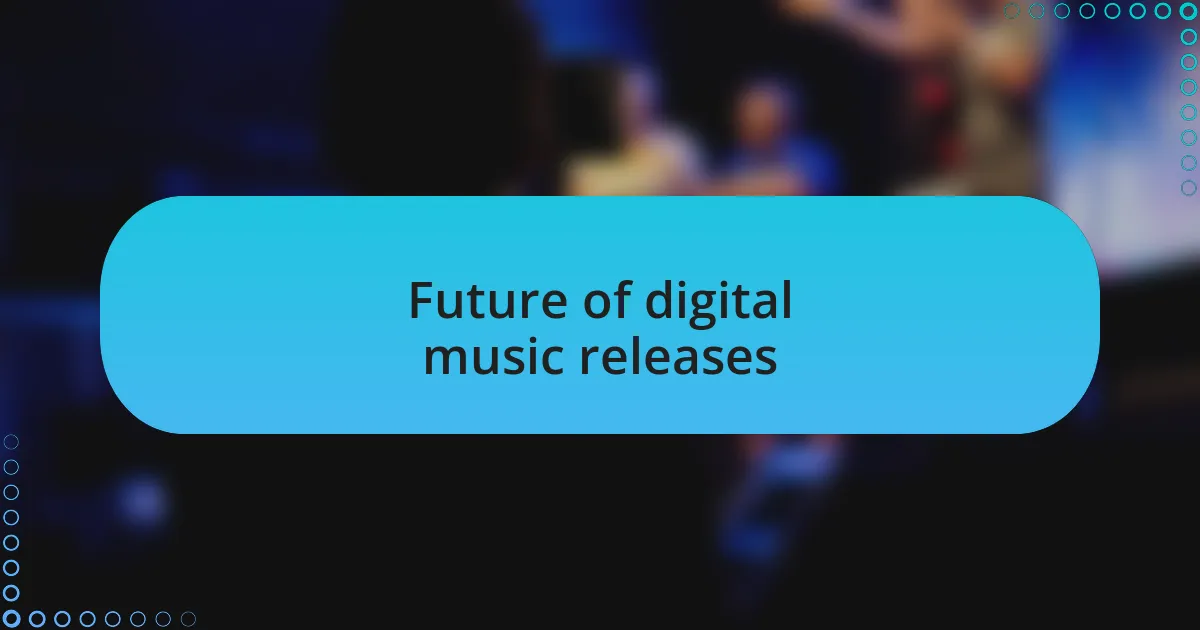Key takeaways:
- Digital music releases allow instant global sharing, but navigating distribution platforms can be overwhelming for artists.
- Engaging with listeners through online interactions and understanding analytics enhances connection and promotional effectiveness.
- Future trends in digital music will include augmented reality, AI-driven personalization, and a growing emphasis on sustainability.

Understanding digital music releases
Digital music releases have transformed the industry significantly, allowing artists to share their work with a global audience instantly. I remember the excitement I felt when I first released a single on a streaming platform. It was surreal to see listeners from different countries experience my music within minutes; it really highlighted the power of accessibility in today’s music landscape.
In my experience, navigating digital music distribution can be overwhelming. There are countless platforms available, and choosing the right one often feels like trying to find a needle in a haystack. Have you ever spent hours researching which service offers the best royalties or the easiest user interface? Trust me, I’ve been there, and it often comes down to prioritizing what matters most to you as an artist.
The emotions tied to a digital music release can be intense. The thrill of seeing your name on a platform can be exhilarating, but there’s often an undercurrent of anxiety about how listeners will receive it. It’s a vulnerable moment when your passion is laid bare for the world to hear. Each release represents not just a collection of songs, but a piece of your soul shared with others—an experience that’s both terrifying and liberating.

My personal music release experiences
One of the most striking moments in my music release journey was when I experimented with a surprise drop. I remember waking up one morning, feeling bold, and deciding to release a track without any prior promotion. The sheer thrill of pressing that publish button was exhilarating. There’s this electrifying anticipation—how would fans react? It was as if I was inviting the world into a moment of spontaneity that sometimes feels lost in our overly-planned lives.
Another experience that stands out is the first time I engaged with listeners after a release. I hosted an online listening party, and to my surprise, the feedback poured in. This interaction created a whole new level of connection. I found myself smiling at their reactions and questions, validating my efforts in ways I hadn’t anticipated. Have you ever shared something so personal and watched it resonate with others? That feeling of shared experience amplifies the emotions tied to my music.
I’ve also had my fair share of technical hiccups during releases. I once set a release date only to find out that a critical upload had failed. The frustration mixed with worry about disappointment was palpable. It made me realize that even in the digital age, nothing is perfect, and each setback can serve as a valuable lesson. How do you deal with unexpected challenges? For me, it’s about keeping perspective—each release is a step in my artistic journey, with all its bumps along the way.

Lessons learned from online promotion
Online promotion taught me that timing is everything. I remember posting my new single on a Friday, only to realize later that many listeners were busy winding down for the weekend. I learned that releasing music during a peak time, like early in the week, can keep the momentum alive. Have you ever dropped something exciting when no one was around to catch it? The right timing can amplify your message beyond what you might expect.
Engagement metrics became my guiding compass. After a release, I dove deep into analytics, uncovering where my listeners were coming from and what they enjoyed most. The moment I noticed that a certain type of social media post led to a spike in plays, it was clear: I needed to cater to that interest. Isn’t it intriguing how the numbers can reveal so much about our audience’s preferences? Understanding this dynamic not only refined my promotional strategy but also fostered a deeper connection with my fans.
Finally, I discovered the value of consistency in my online presence. Initially, I’d sporadically share updates and releases, but I soon recognized the power of being a regular part of my listeners’ feeds. One month, I committed to weekly behind-the-scenes content, and the response was overwhelming. Have you felt that sense of community when you see familiar faces online? It’s rewarding to cultivate a familiar brand, as it transforms casual listeners into dedicated fans who feel invested in your journey.

Future of digital music releases
The future of digital music releases is poised for innovation, with trends like augmented reality and immersive experiences taking center stage. Imagine launching an album where fans can interact with holograms of the band or explore virtual venues! I think this will revolutionize how we connect with our audience, transforming passive listening into an engaging experience. Could you envision being part of a live performance from the comfort of your couch, feeling like you’re actually there?
Moreover, the rise of artificial intelligence is shaping how music is produced and distributed. I’ve seen how AI tools can analyze listener preferences and suggest personalized playlists. It’s fascinating to consider how these technologies might help emerging artists gain visibility in a crowded market. Are we ready for a future where an algorithm might determine the next big hit?
Finally, I sense that sustainability in digital releases will become increasingly important. As consumers become more aware of environmental issues, artists and labels are likely to adopt greener practices. I remember feeling empowered when I learned about artists who offset their carbon emissions from touring. Isn’t it heartening to think that music can not only entertain but also contribute positively to the planet? This could foster stronger ties between creators and their audience, uniting us in a shared mission.